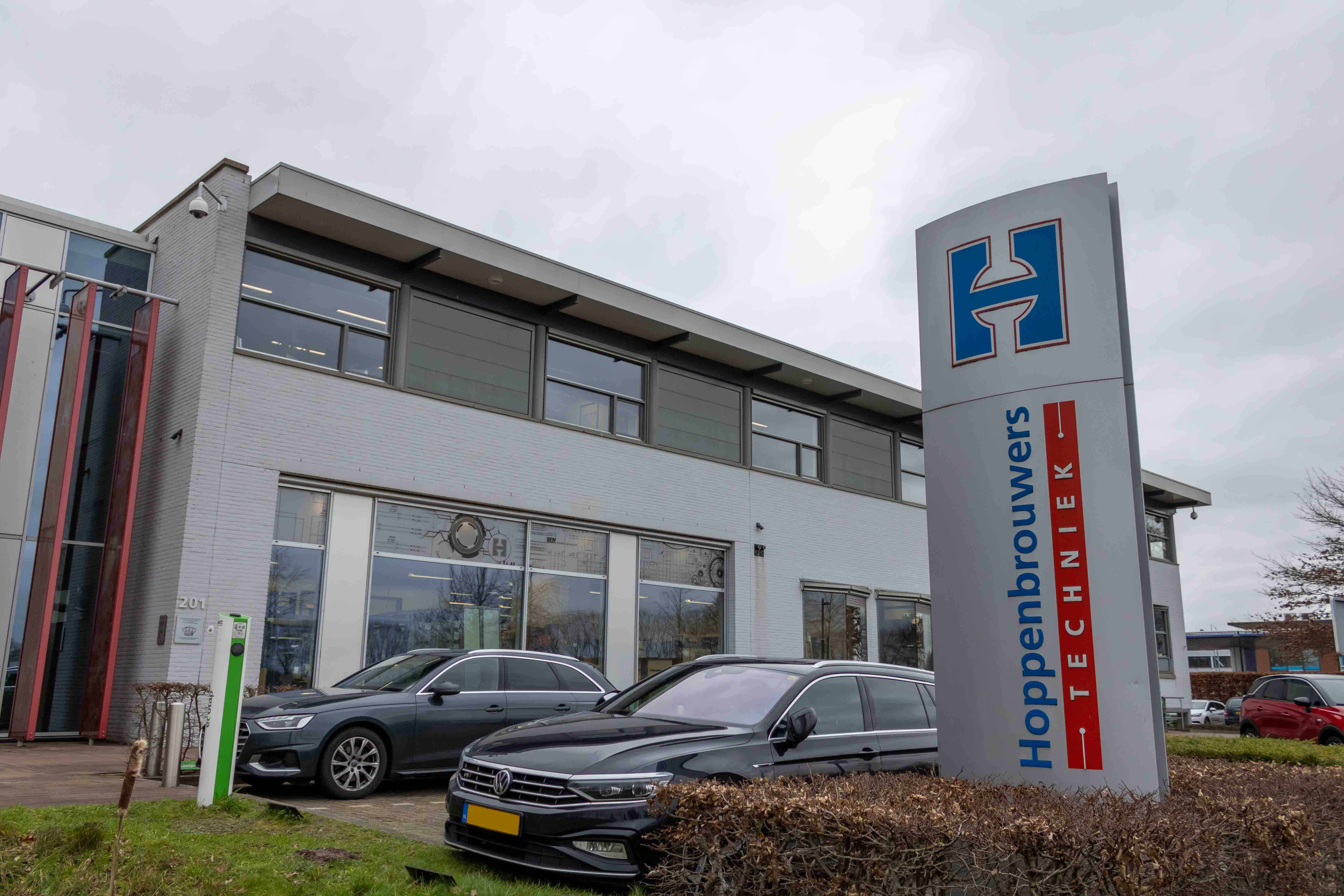
“A drone is an amazing device that can fly without human intervention. This means that there is an infinite number of applications,” says Aabharan Hemanth, team member of SyFly. A drone operates in an area ranging from a few meters to tens of meters above the ground, often in spaces that we find difficult to reach by any other means. Airplanes and helicopters, for example, fly much higher. Hemanth and the team state that this offers plenty of new opportunities.
As a student team, SyFly wants to act as an umbrella for all kinds of developments in the field of drones. “At the university in Eindhoven, there still wasn’t a central place where students could go if they are interested in drones. That’s what we are now,” says Hemanth. For example, the team is working on a drone for the Royal Netherlands Meteorological Institute (KNMI) to make more accurate weather forecasts. In addition, the students are also looking at the possibilities of having drones pick fruit and are also part of the 5G hub on the High Tech Campus.
Impact
Initially, the team worked on one project with one drone. The goal was to commercialize the technology and set up a start-up. The students discovered that as a group of enthusiastic, young people with a lot of technological knowledge, they would also be able to play another – even more important – role in drone development. “We are now getting to do all kinds of different projects where we exchange our expertise and experiences with other student teams, researchers from the university and, of course, the companies that are involved,” he explains. Research and technology are paramount in this. “Drones are still relatively new. Different sectors want to discover the potential they offer. By doing different projects as a student team, we can have a greater impact in several areas.”
SyFly is part of TU/e innovation Space. Read more about other student teams here.
Climate
According to Hemanth, the possibilities are endless when it comes to drones. Package delivery, for example, is faster. “Then they are used more as a service,” he explains. “Drones can also make a difference in healthcare. For one thing, transporting donor organs by air is much faster than by road. That can save lives.” Aside from operational tasks, drones can also collect new data. “For instance, currently satellites and ground-based weather stations are often used to measure climate change. Most of the weather stations are in Western countries because that’s where most of the research is carried out. That doesn’t give a complete picture,” he explains. “Drones can quickly fly over different countries to pick up data everywhere. This yields a lot of extra valuable information. It’s also how you can validate the information from satellites.”
“Most of the added value is in the sectors where we can use drones for our earth,” Hemanth goes on to say. He cites agicultural and farmland monitoring, weather forecasting and fruit picking as potential applications. “Using a drone to retrieve data about the weather is cheaper than existing measurement methods. This makes data more accessible in the future for farmers in Africa, for instance. As a result, they can better prepare for extreme weather, and harvests will not fail as quickly or as often,” he adds.
Collaboration
Hemanth believes that the most important thing is collaboration with organizations and companies that may eventually use the drones. “Often students develop cool things, but never really present them to the public. Only by actually reaching out and talking to companies can we really make a difference,” he says.
SyFly was inspired by Fruitpunch AI. This start-up also had its start at TU/e as a network around AI. Since then, the company has undertaken a number of impactful projects. Read more about Fruitpunch AI here.
Legislation
European legislation for drones will probably be loosened over the next few years. Currently, the rule is still that the pilot must always be able to see their drone when it is flying. That makes testing autonomous flight almost impossible. With the new legislation, drones will also be allowed to fly outside the operator’s field of vision. The operator then follows the drone on a screen. “That opens up a whole host of new applications,” he adds. “One company in Africa is using a drone to transport blood to and from hospitals. Transporting donor blood this way is much faster, and that can save lives.” Such applications are not yet widespread in Europe, but according to Hemanth, changes in legislation should make that easier in the future.
Start-ups
Ultimately, he hopes that such useful drone technologies will be discovered during the projects developed by the various start-ups that spawn from SyFly. The student team will remain active on the university and a small spin-off will then bring a specific technology to the market. Hemanth: “It’s great when companies eventually spring up from SyFly. We really want to work with passionate students on cool technologies. So we can all see how drones are changing the world and contribute to that as well.”







